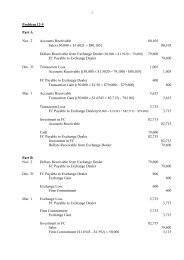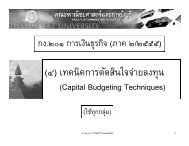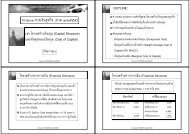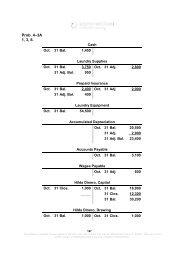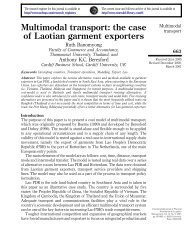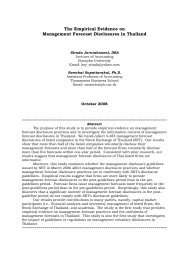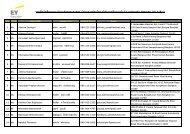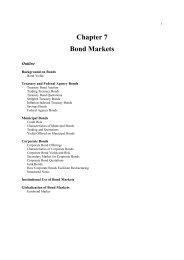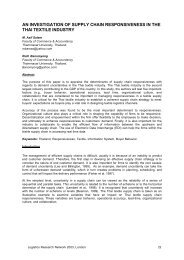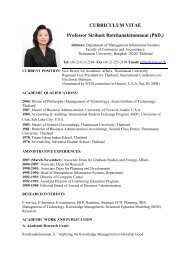Human capital and performance: A literature review
Human capital and performance: A literature review
Human capital and performance: A literature review
You also want an ePaper? Increase the reach of your titles
YUMPU automatically turns print PDFs into web optimized ePapers that Google loves.
or consultancies, or with their own organisation’s finance or strategy colleagues. HR<br />
professionals do use external benchmarks, some of which they are internally inappropriate for<br />
valid analysis. More importantly, they do not tie up the metrics to the business goals.<br />
Reporting human <strong>capital</strong> measures<br />
Most companies have a wealth of human <strong>capital</strong> data, but, as the Conference Board<br />
concludes: ‘most are reluctant to report it publicly. Although the primary motivation is to<br />
contribute to the bottom line, many companies do not wish to communicate the results of HC<br />
measurement to investors’ (2002: 7). Nevertheless, the report asserts that the measures,<br />
which are most frequently reported, are as follows:<br />
• the percent of employees in stock plans;<br />
• revenue per employee;<br />
• average pay;<br />
• training expenditures; <strong>and</strong><br />
• compensation.<br />
The three factors that explain why companies do not report more on human <strong>capital</strong> are (i) the<br />
fear of competitors – anxiety over whether human <strong>capital</strong> information is competitively<br />
sensitive; (ii) the fear of unions or employees, that is, concern that providing too much<br />
information may restrict the organisation’s flexibility (<strong>and</strong> worries over legal issues arising);<br />
<strong>and</strong> (iii) a concern for practical difficulties of collecting human <strong>capital</strong> information to present<br />
for reporting, <strong>and</strong> whether investors will underst<strong>and</strong> it.<br />
Conclusions<br />
A growing number of studies have attempted to show the link between human resources <strong>and</strong><br />
<strong>performance</strong>. Although the case is not watertight, due to a number of methodological reasons,<br />
the weight of evidence is beginning to look compelling. An important finding of this research<br />
is that both contingency <strong>and</strong> best practice models can complement each other to create the<br />
conditions for effective human <strong>capital</strong> management. Meaning that the adoption of such high<br />
<strong>performance</strong> practices as incentive-based pay or selective staffing, is part of building an HR<br />
architecture. The details of how these practices become effective within the organisation<br />
raises a matter of aligning these broad principles to the strategy <strong>and</strong> the context of the<br />
<strong>Human</strong> <strong>capital</strong> <strong>and</strong> <strong>performance</strong> 17



